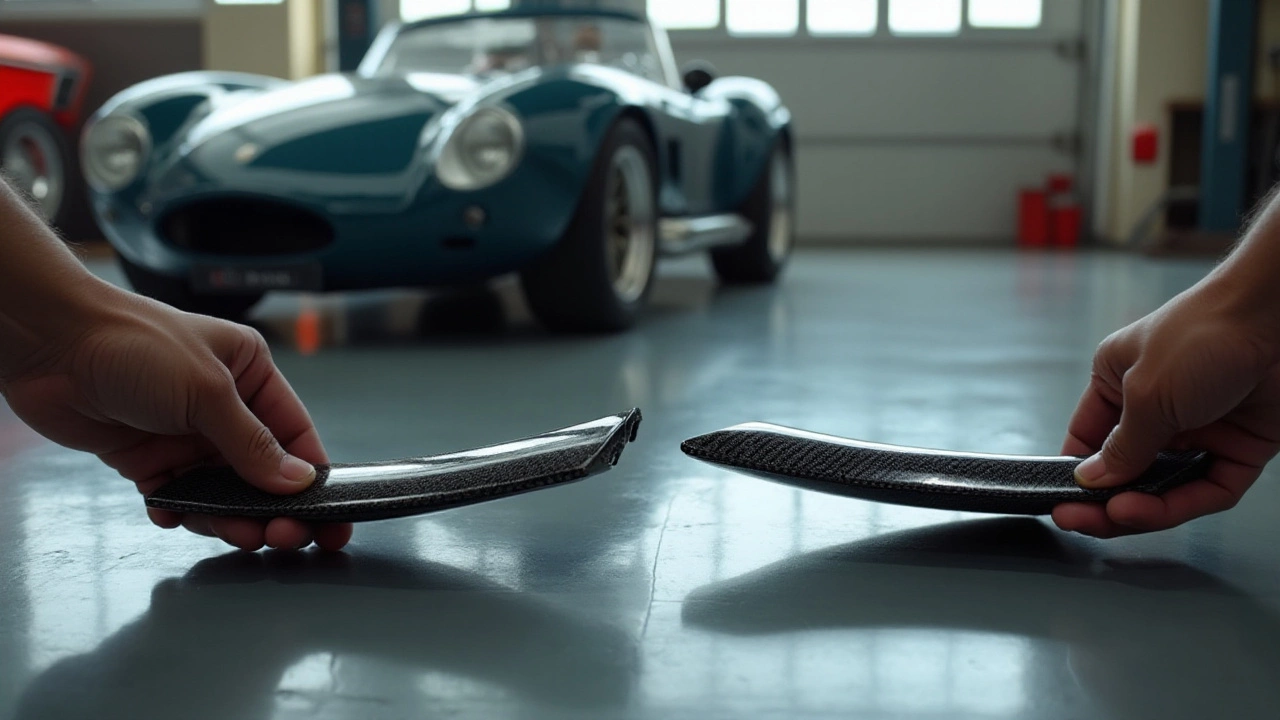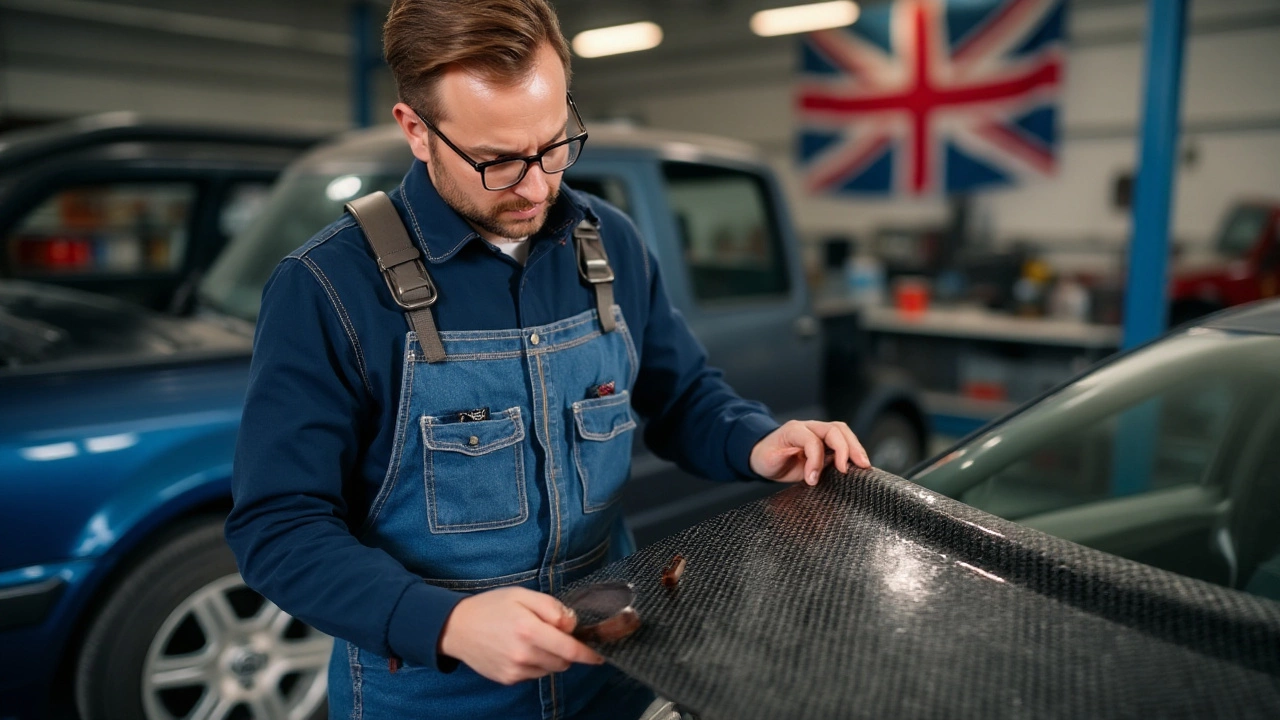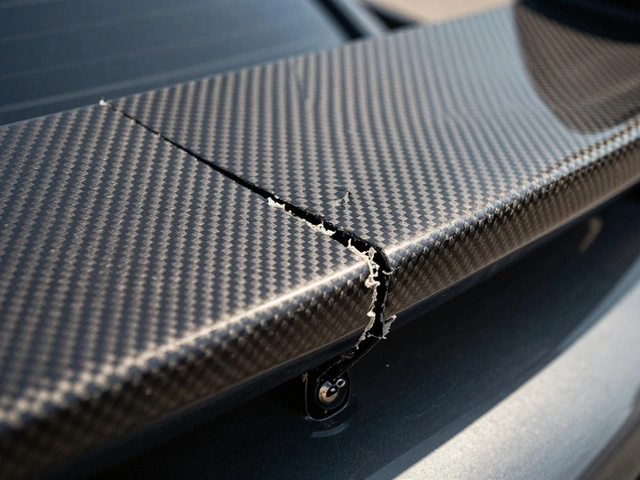Carbon fiber has become a buzzword in the automotive industry, renowned for its strength and lightweight properties. With its sleek appearance, it's no wonder car enthusiasts are eager to integrate this material into their vehicles. However, the market is flooded with imitations that can fool even the most discerning buyers.
In this article, we will delve into various techniques to tell if a carbon fiber spoiler is real. By understanding its distinct features and conducting simple tests, you can confidently navigate the market. Whether you're a seasoned car enthusiast or a curious newcomer, this guide aims to equip you with the knowledge to make informed decisions.
- Understanding Carbon Fiber
- Common Signs of Fake Carbon Fiber
- Testing Methods for Authenticity
- The Appeal of Real Carbon Fiber Spoilers
- Tips for Purchasing Genuine Carbon Fiber
Understanding Carbon Fiber
Carbon fiber is a fascinating material that has taken the automotive world by storm. Made from strands of carbon that are thinner than human hair, these fibers are usually woven together to create a fabric. When this fabric is set in a resin, it forms a composite material that is both incredibly strong and incredibly light. This unique combination of properties makes it an ideal choice for use in vehicle parts like carbon fiber spoilers.
The history of carbon fiber dates back to the late 1960s, when it was first used in the aerospace industry. As technology evolved, it became more accessible and started appearing in high-performance cars, eventually making its way into everyday vehicles. Today, carbon fiber is not just about performance, but also about style. Its distinctive weave pattern gives vehicles a high-tech, performance-oriented look that is hard to match with other materials.
The beauty of carbon fiber isn't just skin deep; its advantages go far beyond aesthetics. As one auto industry consultant once said, "The power of carbon fiber lies in its ability to revolutionize vehicle dynamics by coupling weight savings with unprecedented strength." These properties make carbon fiber a top choice for racing cars, supercars, and even luxury vehicles.
Carbon fiber's strength-to-weight ratio is what truly sets it apart. While steel is strong, it's also heavy, and aluminum, though lighter, doesn't possess the same strength. Carbon fiber, on the other hand, offers the best of both worlds. This means that parts made from it can withstand high stress while being significantly lighter than their metal counterparts. This weight reduction can lead to improved fuel efficiency and faster acceleration, crucial factors in both everyday driving and competitive racing.
Another remarkable aspect of carbon fiber is its resistance to temperature changes and corrosion. Unlike metals that may rust or degrade, carbon fiber remains stable under a wide range of conditions. This durability makes it an attractive option for areas of a vehicle exposed to harsh elements. Additionally, the flexibility in design that carbon fiber offers allows for more creativity in creating aerodynamically advanced shapes, which can further enhance the performance of a vehicle.
Despite its many benefits, carbon fiber does come with a higher price tag. The production process is complex and involves several stages, from creating the carbon strands to laying them in the desired form and finally curing them with resin. This labor-intensive process is what makes genuine carbon fiber parts much more expensive than traditional materials.
The growing demand for carbon fiber and its increasing application in various industries also contribute to advancements in manufacturing techniques. Innovations are steadily reducing costs and expanding its use even beyond the realm of high-performance automotive applications. Yet, whether used in the sleek body of a sports car or the spoiler of a street racer, the visual and functional impact of real carbon fiber remains undeniable, capturing the imagination of enthusiasts around the globe.
Common Signs of Fake Carbon Fiber
When it comes to identifying carbon fiber, authenticity is a big deal. There's a certain allure to its woven pattern, which not only looks high-tech but also signifies the promise of lightweight strength. But not everything that looks like carbon fiber actually is. Imitators have perfected their craft, sometimes using convincing methods to replicate that distinctive appearance without the benefits. One of the first signs to look for is the weave pattern itself. Real carbon fiber is characterized by its precise and uniform weave. If you notice irregularities, such as a noticeable shift in the weave or inconsistencies in the pattern, you might be dealing with a fake.
Another tell-tale sign is that genuine carbon fiber has a deep, three-dimensional appearance. This effect is due to the clear resin that encases the fiber cloth. On the other hand, fake versions might appear flat or one-dimensional as they are often just a printed pattern covered in a glossy 'carbon fiber-like' film. If the piece in question looks superficially glossy but doesn't have that depth, it is likely not genuine. A little-known fact that can also help in your assessment is the weight. Real carbon fiber is incredibly light due to its composite nature. If the component feels heavier than expected, it might be an imitation made from heavier materials disguised as carbon fiber.
Sound and Touch Test
One unconventional method to spot a fake involves sound. Real carbon fiber, when tapped lightly, often emits a high-pitched, metallic-like sound due to its solid yet lightweight construction. In contrast, knock-offs, frequently made of plastic, give off a dull, hollow thud. Touch can also be insightful; genuine carbon fiber typically has a cool, smooth feel, while imitations might feel warm or slightly tacky to the touch.
"In cars, we always say that it’s not just about performance. It’s also about problem-solving and aesthetics, where every detail counts," says Greg Anderson, a renowned automotive engineer. Understanding these little intricacies can make all the difference in ensuring you make the right investment for your vehicle's enhancement.
These signs are essential for anyone looking to buy a real carbon fiber spoiler. Remember these checks next time you're considering an upgrade, and you’ll protect both your wallet and your car's integrity. Also, consider speaking with fellow enthusiasts or professionals who can provide personal anecdotes or experiences with manufacturers to help you further differentiate real from fake. The key is attention to detail and a little bit of skepticism, which can serve as your best defense against falsified products.

Testing Methods for Authenticity
When it comes to spotting the real deal, identifying authentic carbon fiber can sometimes feel like a guessing game. However, there are definitive ways to discern the genuine article from the imitators. One of the most straightforward methods to check its authenticity is the visual inspection. True carbon fiber typically exhibits a uniform weave pattern, with fibers neatly intertwined. If you notice any irregularities or inconsistencies in the weave direction or tension, it might be a red flag signaling a fake. Pay attention to this simple detail as it can save you from making a poor investment.
Another favorite method among professionals and amateurs alike is the tap test. Real carbon fiber is known for its unique, resonate sound when tapped. It's a subtle difference, but when compared side-by-side with faux carbon, the real material has a more distinct, almost metallic ring to it. To perform this test, all you need is a moderate tap with your knuckle or a coin. The sound isn’t just a fun quirk; it’s a reliable indicator of the authentic material's solid, yet light nature.
If you have access to a bit of heat, there's a simple test that does wonders for revealing a spoiler's true nature. Genuine carbon fiber is heat-resistant due to its high thermal tolerance. By applying a small amount of indirect heat, perhaps from a hairdryer, within a reasonable distance, you shouldn’t see any changes in real carbon fiber. However, fake materials tend to warp or discolor under such conditions. This is especially true for certain imitations that use thin layers of printed film to mimic the look of carbon fiber.
In the industry, some aficionados also resort to more scientific methods. A density test, for instance, can pinpoint authenticity with precision. Genuine carbon fiber generally has a density of 1.5 to 2.0 grams per cubic centimeter. If you have the means to perform this test, it can be an assured way to verify your materials are what they claim to be. It's not as accessible as the other options, but it's a foolproof method.
"Real carbon fiber is to automotive parts what diamonds are to jewelry. Recognizing it becomes intuitive once you're familiar with its characteristics," notes automotive materials expert, James Peterson.
Another rather niche, but handy tool is the flex test. Carbon fiber is well known for its high strength-to-weight ratio. This means that while it’s incredibly light, it isn’t easy to bend. If you have a piece of carbon fiber that moves too freely or bends with little effort, you might have a counterfeit on your hands.
Armed with these varied techniques, whether simple or intricate, anyone can gain confidence in distinguishing the real from the fake. Knowing these signs not only helps preserve your investment but also ensures that your vehicle's enhancements achieve the desired performance and aesthetics. Remember, identifying genuine carbon fiber might initially seem challenging, but with keen observation and these tests, the truth will always reveal itself.
The Appeal of Real Carbon Fiber Spoilers
The allure of genuine carbon fiber spoilers isn't just about their sleek, futuristic appearance. These lightweight marvels are a testament to the incredible innovation in material science. What makes carbon fiber so special is its unique blend of strength and lightness, a combination not easily achieved by traditional materials. Unlike metals, carbon fiber doesn't succumb to rust, making it an ideal choice for car enthusiasts looking for durability without sacrificing style.
Real carbon fiber spoilers stand out due to their ability to enhance performance. Yes, they're striking to look at, but more importantly, they're light. This weight reduction directly impacts the car's performance, improving acceleration and fuel efficiency. In motorsports, every fraction of a second counts, and the reduction in weight can be a deciding factor in a race's outcome. It's no wonder professionals and hobbyists alike seek this material to give their vehicles an edge over the competition.
Another aspect of the appeal is the prestige attached to owning real carbon fiber parts. There is an air of sophistication and exclusivity about cars equipped with these parts. This isn't just a marketing ploy; carbon fiber is expensive to produce. The complex manufacturing process requires expertise and state-of-the-art technology, and that doesn't come cheap. As a result, owning a vehicle with genuine carbon fiber components is often seen as a status symbol, and not everyone can easily replicate that.
"It's a matter of quality and sophistication, combining science and art, creating automotive masterpieces," says renowned automotive designer, Ian Callum.
Adding a real carbon fiber spoiler isn't just about performance; it's also an aesthetic upgrade. The unique weave pattern of carbon fiber is inherently attractive to the human eye, and it exudes a sense of high-tech luxury. Car enthusiasts often discuss how carbon fiber not only boosts performance but also enhances the vehicle's overall value. Whether you're cruising downtown or taking on tight corners, having a genuine carbon fiber spoiler is a statement of style and functionality.
The investment in a real carbon fiber spoiler also promises long-term benefits. Apart from improving the efficiency and look of the car, it also offers better resell value. Should you decide to part with your vehicle in the future, having genuine enhancements like a carbon fiber spoiler can significantly increase your car's market value. Unlike cheap imitations that may deteriorate or fail, real carbon fiber maintains its integrity over time, providing enduring benefits.

Tips for Purchasing Genuine Carbon Fiber
Investing in a carbon fiber spoiler for your car can significantly enhance both its appearance and performance. However, spotting genuine carbon fiber among a sea of counterfeits can be tricky. The process of buying authentic carbon fiber begins with thorough research and understanding of what sets the genuine article apart from imitations. To start, always verify the reputation of the vendor. Established brands and dealers are more likely to offer real carbon fiber products. Look for reviews and testimonials from other buyers to gauge the authenticity of their offerings.
Another crucial factor is price. While everyone loves a good deal, extremely low prices on carbon fiber spoilers should raise a red flag. Real carbon fiber involves an intricate manufacturing process, which is reflected in its cost. Be wary of sellers offering prices that seem too good to be true, as these might be using lower quality materials or outright fakes. When possible, examine the product in person if you can. Genuine carbon fiber has a unique texture and feel, with its distinct woven pattern visible under the surface coat. This pattern should have depth and a 3D appearance, not the flat look commonly seen in imitation products made from vinyl or other materials that mimic carbon fiber’s appearance.
Additionally, reviewing the product’s documentation can shed light on its authenticity. Genuine items often come with information about the manufacturing process and materials used. Certificates of authenticity or product specifications can also serve as useful indicators. Sellers who are confident about their product will have no qualms about providing this information upon request. Sometimes visiting the manufacturer's website can provide insights into how to authenticate their products and spot replicas.
For those who enjoy diving into the technical aspects, investigating the density and weight of the piece can be revealing. Carbon fiber is known for its feather-light properties, yet it packs a punch in terms of strength. If a spoiler feels unusually heavy, it might be worth questioning its authenticity. When buying from online marketplaces, be attentive to high-definition images of the product. Genuine carbon fiber will have a consistent pattern without any irregularities or distortions. Sometimes, you might even find detailed user guides on how to verify the authenticity, which shows the confidence of the seller in their product’s legitimacy.
"In the world of automotive upgrades, the advice from seasoned professionals is invaluable. As stated by the late Carroll Shelby, 'If you don't have the proper equipment, you can't win.' This rings true for the parts you choose for your vehicle, emphasizing the need for quality over quantity."
Finally, if you're uncertain, consider consulting with a professional. Many automotive shops offer services where they can authenticate the carbon fiber components. This might incur an additional cost, but it could save you from mistakenly purchasing an imitation. Engage with car enthusiast communities online. They are often savvy about where to find genuine products and which dealers to trust. Using these tips, you can navigate the market with greater assurance and invest in a carbon fiber spoiler that truly enhances your vehicle both aesthetically and functionally.






